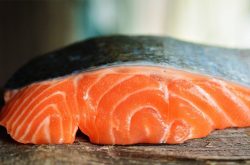
Seafood is the world’s most highly traded food commodity, by value, and the product is hard to track from source to market. Reports of seafood mislabeling have increased over the past decade, but few studies have considered the overall environmental effects of this deceptive practice.
A study by Arizona State University, the University of Washington and other institutions examined the impacts of seafood mislabeling on the marine environment, including population health, the effectiveness of fishery management and marine habitats and ecosystems.
The results, recently published in the Proceedings of the National Academy of Sciences, show that some 190,000 to 250,000 tons of mislabeled seafood are sold each year in the U.S., making up 3.4% to 4.3% of all the seafood consumed. Farmed Atlantic salmon, often labeled and sold as Pacific salmon or rainbow trout, is the second-most-consumed mislabeled seafood product in the U.S., just behind shrimp.
Co-author Sunny Jardine, an assistant professor in the UW School of Marine and Environmental Affairs, helped to design a statistical analysis to compare the product on the label with the one that was actually consumed.
“It’s important to consider mislabeled consumption, rather than mislabeling rates, when thinking about the various biological and environmental impacts of mislabeling,” Jardine said.
Read more at UW News »
